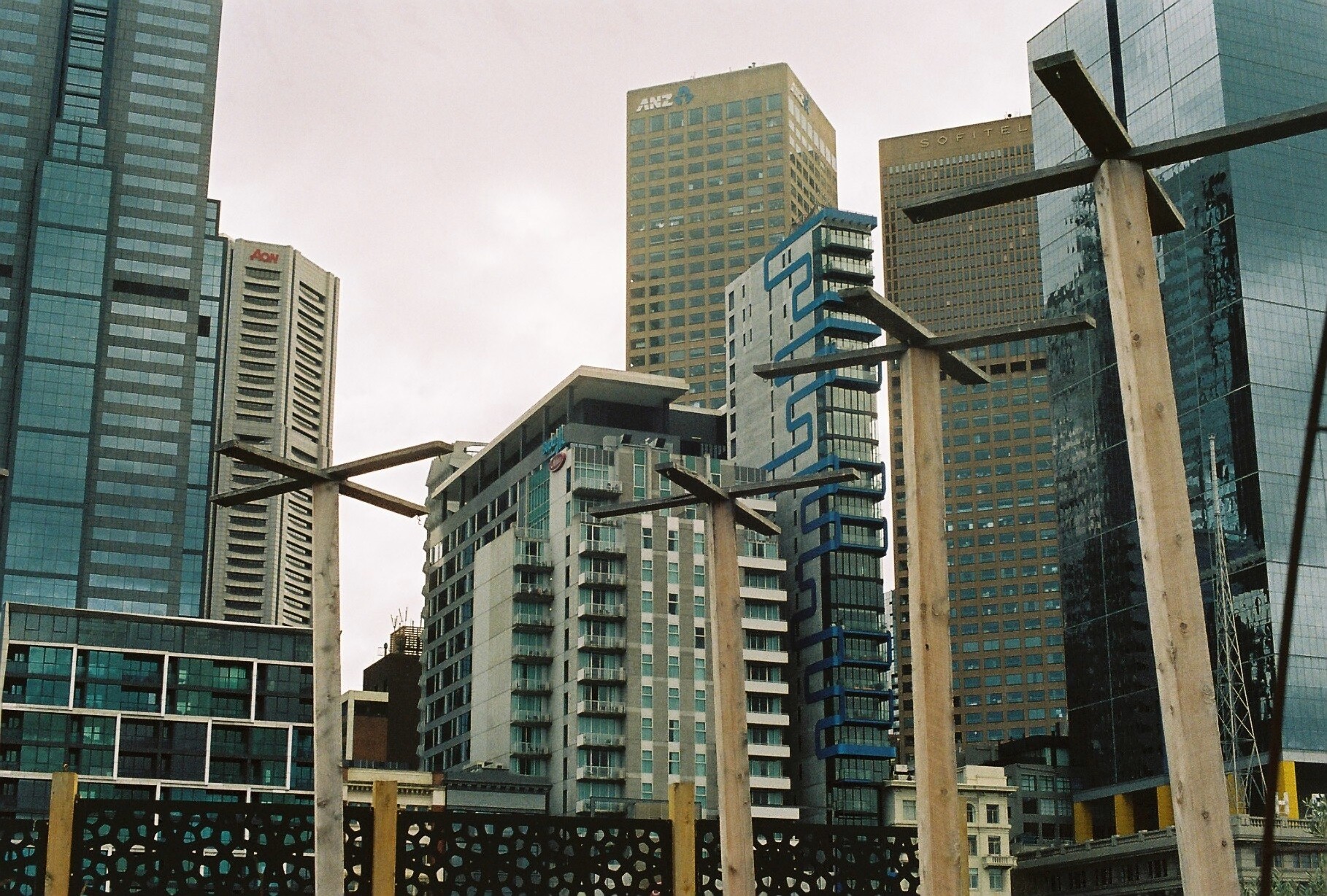When creating this interview we as a group decided to take a similar approach
to how our artist Arie Rain Glorie would approach one of his video artworks.
Arie is known for his repetition and often distorted sounds. When editing our
interview we decided to use his audio from his artwork ‘Ascension of the fool’
where he uses his voice and distorts it past recognition. It was decided that
this would be our basic soundtrack and we placed in on repeat to both
emphasise the edited and distorted sound as well as the style of repetition in
his works.
As he creates video artworks, many of his films are displayed through
projections (such as in the Gertrude street projection festival), simply out of a
window and creates installations with videos that are displayed on a loop.
Our group really struggled with finding times that we were all available, so
there were many times where only two of us would meet up. The way we
worked through this was through a constant Facebook chat that kept us all in
the loop. This was our downfall as a group, as we all couldn’t meet up we
struggled in sharing our workload as well as not having excess time to reshoot
and regroup as much as we could have.
Although our filming and editing skills are lacking we really wanted to push our
work conceptually. Originally we were planning on filming the places that Arie
had displayed his works and contrast these moving and still images of the
space not being used and compare it to it when Arie had filled it up with his
works.
Our focus was going to be the Gertrude street festival where Arie projected
his work on a wall. Unfortunately we were unable to attain any footage of
Arie’s works on display or any footage of him working or setting up for it. This
was really disappointing as it would have created greater depth to our
interview but instead we chose to focus on Arie himself and what he has
done, specifically his work and the way he works site specifically.
Together we pushed ourselves to think of small and creative ways to do this.
For example we used two of his artworks and Arie walked us through the way
they were created. This puts a very clear focus on site, but what isn’t as
obvious is the way Arie’s work conceptually connects to our work. We film him
discussing his works and how he creates them in the space that he does
much of his editing and creating, which is in his studio. This links together his
space with his works and creates a non obvious link between his work and his
space and blurs the line between them. It allows the viewer to question
whether his work could create a place, or whether the place is his work.
Arie discussed how ‘Video performance for video art allows you to play with
time and space and achieve things you cant achieve with live performance’
but many of his works seem influenced by live performance. This is where the
notion of space and place really comes into this piece, as he is able to change
In the book Performance and Place by Leslie Hill and Helene Paris they
discuss this notion of ‘contemporary performance and the notion of place’ (L.
the way performances are viewed.
Hill (2006). They discuss how live performance goes hand in hand with
practices that aren’t easy to place in various controlled contexts. For example
what they call ‘framework art’ are works that are displayed in places such as
galleries where they have highly controlled environments. What is most
interesting about Aries work is that it challenges this notion of framework art
through the connection to live performance and specifically the places he
choses to display his works. Yes, he has displayed his works in conventional
galleries but he also displays his works in festivals such as the Gertrude street
projection festival and at testing grounds, which challenges the notion of
place, and the place that video art exists. He chooses to display his works in
non traditional places, places that are not considered a place until his work is
displayed there to create it. This is what is magical about his work, and this is
what we attempted to portray through our interview with him.
We created a place for Arie himself, as an artist to exist, separate to the place
of his artwork.
Hill, L. and Paris, H. (2006). Performance and place. Houndmills,
Basingstoke, Hampshire: Palgrave Macmillan.
